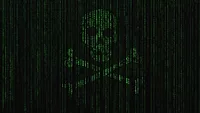An ally for organizations navigating the complex cyber terrain
.webp?t=1712377713)
Image via Unsplash
The evolution of the NIST Cybersecurity Framework in its 2.0 iteration underscores a significant paradigm shift towards a governance-focused approach. This update is not merely about identifying risks but about embedding cybersecurity into the very fabric of business operations. The 'govern' section crystallizes this by emphasizing the holistic impacts of cybersecurity.
NIST CSF 2.0 has been commended for its operational effectiveness. It doesn't just outline risks but offers detailed controls, enabling strategies for businesses, and provides a comprehensive view of the security lifecycle. This hands-on, detailed approach marks a shift from the abstract to the actionable, providing organizations with a blueprint for operational resilience.
A standout feature of the framework is its comprehensive crosswalks, which bridge the gaps between various frameworks, streamlining compliance and operational efforts across industries. The ability to easily export controls is a testament to the framework's commitment to improving operational efficiency.
Effective communication about risk management is another cornerstone of the updated framework. It seeks to ensure that risk communication is effective at all organizational levels, from practitioners to executives, to facilitate comprehensive risk mitigation. This speaks to the necessity of a shared understanding of cybersecurity risks within an organization.
The CSF 2.0 also introduces maturity levels, providing organizations with a means to gauge the implementation and adaptiveness of their cybersecurity practices. This feature helps organizations to not just implement but also to measure and improve their security postures.
In an era where privacy concerns and new technologies like AI and LLMs are at the forefront, the framework integrates privacy considerations and addresses these emerging technologies, ensuring that the framework remains relevant and robust in a rapidly evolving tech landscape.
Lastly, the framework places a renewed emphasis on supply chain risk management, a reflection of recent global cybersecurity incidents. It stresses the need for solid risk management strategies to safeguard against supply chain vulnerabilities, like those exposed by the Log4j incident, thus acknowledging the interconnectedness of modern digital ecosystems.
However, there are challenges and roadblocks in getting organizations to adopt this framework, despite its voluntary nature becoming increasingly referenced in regulations and state legislature:
Complexity and cost
For many organizations, especially small and medium-sized enterprises (SMEs), the complexity and cost of implementing the framework can be significant. Aligning with multiple standards requires a deep understanding of each and the resources to implement necessary controls and processes.
Resource constraints
Organizations, particularly in sectors where cybersecurity has not been a historical focus, may lack the skilled personnel needed to implement and manage the framework effectively.
Regulatory overlap and confusion
While CSF 2.0's closer mapping to other standards is designed to minimize confusion, organizations operating internationally might still face challenges in prioritizing which frameworks to align with primarily. International organizations may opt for ISO as their primary framework and NIST as secondary, whereas U.S.-based organizations might reverse this alignment. This duality can lead to confusion and inefficiencies in compliance efforts.
Cultural and organizational resistance
Changing organizational culture to prioritize cybersecurity and risk management can be a slow and challenging process. Gaining buy-in from all levels of an organization is crucial but often difficult to achieve.
While pointing out these challenges the following would be beneficial to see from the government and sought out by organizations:
Simplify implementation for SMEs
Develop simplified versions of the framework tailored to small and medium-sized enterprises (SMEs) with guidance that is straightforward and actionable. This could include checklists, templates, and case studies relevant to SMEs.
Provide training and education
Invest in cybersecurity training and education to grow the talent pool and provide organizations with the skilled personnel they need to implement and manage the framework effectively.
Leverage technology solutions
Utilize automated tools and services that can assist with compliance and implementation of the CSF. These tools can reduce complexity by automating the mapping of controls and management of documentation.
Clarify regulatory expectations
Engage in a dialogue with regulators to develop clear guidance on how the CSF aligns with other regulatory requirements. This can help reduce overlap and confusion for organizations operating internationally.
Foster a culture of cybersecurity
Build a cybersecurity culture within organizations by emphasizing the importance of security at all levels. Initiatives could include regular training, simulations, and executive briefings to ensure cybersecurity is a shared responsibility.
Enhance governance support
Provide resources and guidance to help organizations integrate the 'Govern' function into their strategic management. This can involve developing governance frameworks that are compatible with CSF 2.0.
Utilize maturity models
Encourage organizations to use the maturity level guidelines to incrementally adopt the framework. This allows them to scale their efforts and make continual improvements over time.
Address privacy and emerging tech
Keep the framework dynamic by regularly updating it to address new technologies and privacy issues. Create specialized working groups or task forces to stay ahead of emerging threats.
Strengthen supply chain collaboration
Promote collaboration among businesses in supply chains to collectively address cybersecurity risks. This can include shared tools, services, and best practices.
Government incentives and support
Governments could offer incentives such as tax breaks, grants, or recognition programs for organizations that demonstrate robust cybersecurity practices aligned with the CSF.
By taking these steps, organizations can not only overcome the barriers to adopting the NIST CSF 2.0 but can also integrate cybersecurity into their business strategy, ensuring a more resilient and secure operational landscape.
In essence, NIST CSF 2.0 is a strategic ally for organizations navigating the complex cyber terrain, arming them with the governance, tools, and guidance needed to establish a resilient and responsive cybersecurity posture.
Looking for a reprint of this article?
From high-res PDFs to custom plaques, order your copy today!







